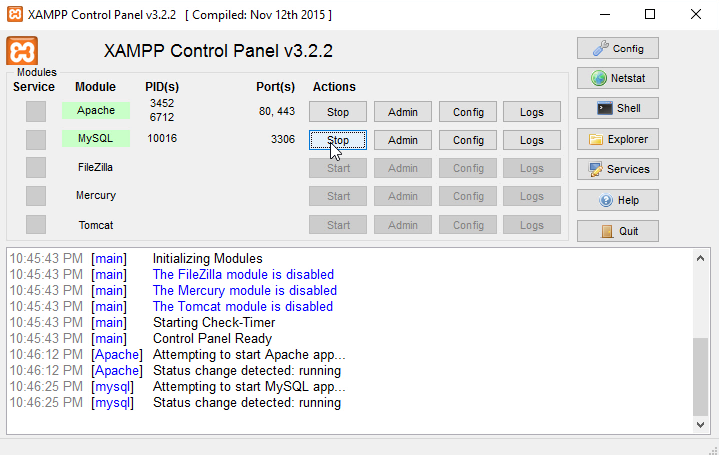Easiest way to do so is to download: Xampp. Share improve this answer. Answered May 11 '11 at 7:30. User552747 user552747. Where is my php.ini file located on. Vse formula trigonometrii v tablice.
In the lecture video, the instructor said that most browsers are configured to display index.php or index.html Let say in my htdoc, I have a folder called report and and index.html file in that folder 1) When I type in the the address bar, localhost:80/report/ Does the browser send a request to the server for either index.html or does it automatically look index.html or index.php without making a request to the server? 2) If I understand, the server will only process php code, and return the processed file to the browser, but what if the index.html, that is supposed to automatically display when the browser loads, has php block code in it. Hi orange sky, Browsers don't determine the document type as that would create far too much room for something to go wrong as it would only take one small bug to cause utter chaos for a website that works correctly in one browser and not the other, what actually controls the type of document you see visually is the web server itself whether it be Apache, Nginx, IIS etc. All servers use different software but a common implementation between all of them is the default document type which is specified in the servers configuration and that's what's used to serve the correct document to the browser, the way this config in Apache for example works is as follows. DirectoryIndex index.html index.php What this will do is search the current working directory or the root folder for the website and look for index.html, if it can't find that file it will then try to find index.php and so on, if none of these files exist on the server then either a directory index will take place which lists out all the files/folders in the working folder otherwise by default a 403 forbidden error will occur.
Hopefully that answers that. But what if the index.html, that is supposed to automatically display when the browser loads, has php block code in it. Static HTML files should NEVER contain PHP code, you should always parse PHP files using their respective.php file extension and serve HTML through them but not the other way around. Hey Chris, Sorry for sounding like I know you, but I do remember you used to answer my questions quite well. In fact, thank you for your clear and thorough answer above; just one question 'All servers use different software but a common implementation between all of them is the default document type which is specified in the servers configuration.
' 1) Is the default document type that is common to most servers called DirectoryIndex(or is this just for example)? Lets say in my htdoc, I have a folder called inc and in the folder called inc, I have a file called about.php. I know that the way to request for a file is by: localhost:80/inc/about.php. When would I have ever had to use default document type? I think I don't need to type it in the address bar, but when can use it.
Sincerely yours. Is the default document type that is common to most servers called DirectoryIndex(or is this just for example)? This is specific only to Apache, I used it as an example because Apache is the most common HTTP server used for hosting websites. Lets say in my htdoc, I have a folder called inc and in the folder called inc, I have a file called about.php.

I know that the way to request for a file is by: localhost:80/inc/about.php. When would I have ever had to use default document type? I think I don't need to type it in the address bar, but when can use it. Default document types are really only necessary for files that load the default file for each parent and child level folder, typically servers are setup by default with index.php as the initial document file to look for; followed by index.html and so on. As a developer the only time you would ever set your own default document type is if your initial file was called something like main.php which I've seen before but to many experienced developers index.php makes the most sense.